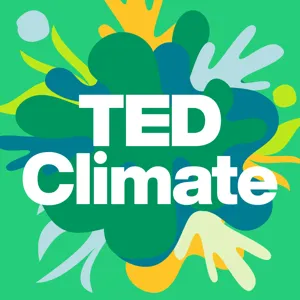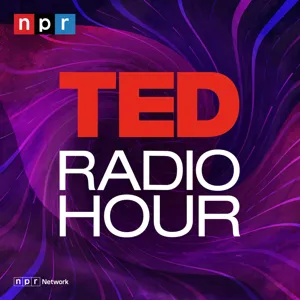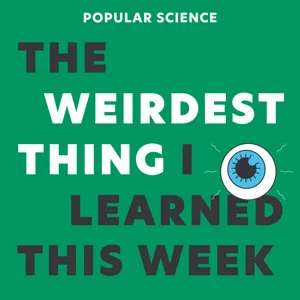Podcast Summary
Embracing the Opportunities in the Fight Against Climate Change: Innovations like cellular agriculture offer guilt-free food sources and potential upgrades to our lives and the planet. Tools like Canva and Slack save time and resources, and podcasts like Climate 1 provide valuable insights on the climate crisis and solutions.
Instead of viewing the fight against climate change as a sacrifice, we should focus on the potential upgrades it brings to our lives and the planet. For instance, in the food industry, the challenge of feeding a growing population with less farmland and reducing greenhouse gas emissions can be seen as an opportunity for innovation. Cellular agriculture, which involves growing meat, eggs, and dairy products from cells in steel tanks instead of living animals, is not only a solution for guilt-free consumption but also a potential upgrade to the way we source all our food. Additionally, tools like Canva for presentations and Slack for work can help individuals and businesses save time and resources, contributing to a more sustainable future. Lastly, listening to podcasts like Climate 1 can provide valuable insights and knowledge on the climate crisis and the actions we can take to address it.
Cellular Agriculture: A New Subsistence Strategy: Cellular agriculture, growing meat directly from muscle cells, could reduce land use, water consumption, and greenhouse gas emissions by up to 99% compared to traditional animal agriculture.
Cellular agriculture, a new technology for growing meat directly from muscle cells instead of raising whole animals, has the potential to significantly reduce land use, water consumption, and greenhouse gas emissions. This method, which involves extracting cells from a living animal, providing a scaffolding for them to grow, and nourishing them in a liquid medium within a bioreactor, could lead to a new subsistence strategy and a second chance at agriculture. The benefits extend beyond animals and farmers, as this method could help address issues such as animal suffering, antibiotic resistance, and epidemic viruses in farms, and the environmental impact of animal agriculture on climate change. Early estimates suggest that cultured meat could require 99% less land, 96% less water, and produce 96% fewer greenhouse gas emissions compared to traditional animal agriculture.
Imagining a new future for agriculture with cellular technology: Cellular agriculture offers a promising solution to reduce emissions, repurpose land, and create sustainable alternatives to animal and plant-based products.
The current farming methods, particularly those related to livestock, contribute significantly to greenhouse gas emissions and put farmers at the mercy of climate chaos. Moreover, a large portion of the Earth is dedicated to raising livestock, which could potentially be repurposed for restoration or other uses. Cellular agriculture, which involves growing proteins and other products from cells rather than from animals or plants, offers a promising solution. It can alleviate the need for vast expanses of land, reduce emissions, and even produce animal-free versions of beloved products like meat, dairy, and leather. In fact, cellular agriculture is already being used to produce certain high-value products, such as rennet, and the technology is advancing rapidly. The potential benefits extend beyond environmental sustainability, as cellular agriculture could also make food production more ethical and accessible. For instance, it could enable the production of cruelty-free foie gras, leather, and silk, and even bring back ancestral foodways for Indigenous peoples. In summary, cellular agriculture presents an exciting opportunity to reimagine agriculture for a climate-changed world, reduce emissions, and create sustainable alternatives to animal and plant-based products.
Disrupting the Traditional Animal Agriculture Industry with Cell-Cultured Meat: Cell-cultured meat, a potential disruptor, faces challenges from heavy subsidies in traditional animal agriculture and the need for business strategy considerations to unlock its full potential, while offering opportunities for culinary creativity and abundance.
Cell-cultured meat, also known as lab-grown meat, is an emerging technology with the potential to disrupt the traditional animal agriculture industry. While the cost of producing cell-cultured meat has been decreasing rapidly, animal meat remains artificially cheap due to heavy subsidization. As scientific breakthroughs continue to be made, the price of cell-cultured meat is expected to continue to drop, while the price of animal meat may increase due to public health and environmental concerns. However, for cellular agriculture to reach its full potential, it's essential to consider the business side of the technology, including ownership, IP protection, governance, and policy. Animal proteins, such as long, stretchy cheeses and rich umami flavors, have long been prized for their unique properties. But with cell-cultured meat, we have the opportunity to create a new era of abundance and culinary creativity. This transformation could be as significant as the shift from hunting to agriculture thousands of years ago. It will take ingenuity and collaboration from both the scientific community and the business world to make this vision a reality.
Exploring the Future of Food and Fashion with Cellular Agriculture: Cellular agriculture could revolutionize food production with new textures and forms of traditional items like milk and meat. Sustainable solutions from nature's catalog may also transform the fashion industry.
The future of food production could drastically change with the emergence of cellular agriculture. Traditional food items like milk and meat could transform into new and unimaginable textures and forms, expanding the boundaries of what we consider edible. The discussion also hinted at the potential of sustainable and natural solutions for the fashion industry, encouraging scientists to explore nature's catalog of inventions and bring them to the world of design. Overall, the speakers emphasized the importance of embracing innovation and exploring new possibilities to address climate challenges in various industries.






